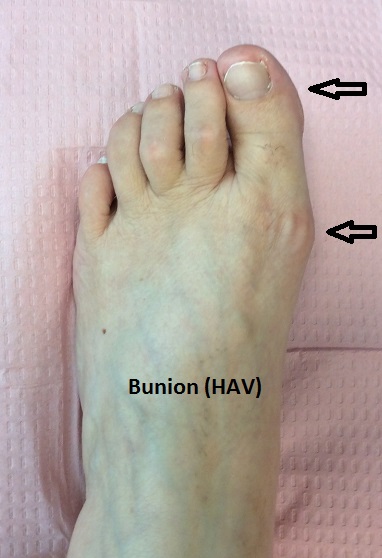
Bunions are typically located at joint of the base of your big toe, and are a bony formation caused by an array of factors. As they are progressive, not treating them as soon as possible will only make them worse. The stress that is placed on your big toe joint causes further issues, such as crowding of your other toes. Bunions tend to be genetic, but other outside factors can aggravate the bunion, leading to real issues. For example, women that wear tight shoes, such as high heels or anything with a pointed toe, will be more at risk for an aggravated bunion. Conditions such as flat feet or arthritis can also negatively affect a bunion.
Symptoms can include pain, swelling, redness, calluses or corns, an abnormal angle of your big toe, and more. None of these symptoms are ideal, and most of them cannot be cured with time. If you do notice a bunion, icing the area can sometimes help with a small bunion, as can utilizing cushioned pads. However, if your bunion is rather severe, it is important to contact a podiatrist. Treatment options include foot surgery, which will straighten your big toe and remove the affected tissue.
The best treatment for bunions is prevention. While you cannot prevent genetics, you can be proactive in the factors that aggravate your bunion. When buying shoes, only buy shoes that really fit you; if they seem snug in the store, they are too small. In addition, broad-toed and soft-soled shoes will be your best friend, unlike high heels or pointed toe shoes. Sometimes, foot exercises can help due to their ability to strengthen the foot.
If you notice a bony prominence in the joint of your big toe, contact your podiatrist today. Alpine Foot Specialists can help diagnose and treat your bunion, allowing you to avoid severe pain or deformity.
Courtesy of: USA Today